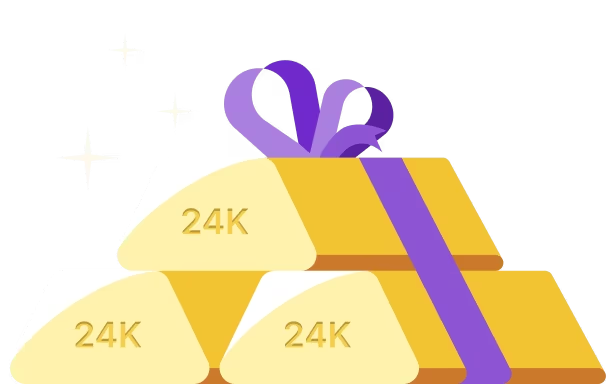Over the years, our world has become more convenience-driven. As a result, the cost of living has also skyrocketed, driving people to discover a plethora of ways to have additional income sources besides primary business or employment to meet daily needs. With the rise of DIY investing, individuals are taking control of their finances and seeking out new opportunities to grow their wealth.
However, the financial state never seems to stay stable for long, especially when the global economy suffers from a never-ending inflation and deflation cycle.
Therefore, it has become imperative for everyone to make investments to grow wealth. Whether mutual funds, equity, stock market, or bank fixed deposits, investments are a must.
Without it, you won't be able to survive a sudden financial crisis, especially if the situation gets extreme.
But for most of us, the word 'investment' brings sweat to every forehead because it is not easy.
Choosing the right asset to invest in at the right time in the correct amount determines one's profitability.
This is why, before expanding your savings, make a checklist of skills required to become a pro-DIY investor and start learning.
What is a DIY investment?
Traditionally, people consult financial advisors before making any investment decisions. Humans are prone to mistakes.
And historically, many people have lost thousands, if not lakhs, of money due to the wrong investment decisions made by financial advisors.
As a result, powered by easy access to information on the internet, people have shifted their focus to building and managing their portfolios with the intervention of professional financial advisors.
It is known as Do-It-Yourself or DIY investing. A self-directed investment gives you complete control over your assets, but you also eliminate the brokerage fee, thus ensuring maximum returns on investment.
Benefits of DIY investment
DIY investment offers many benefits. DIY investing gives investors control over their financial decisions.
Above all, it encourages investors to participate in market and investment portfolio tracking actively. Such as:
- DIY investing allows investors to choose their options based on their needs, unlike the sales target of a bank employee or profit-minded professional advisors.
- Since you will be on your own, DIY investment provides a vast scale of opportunities to everyone. You will easily access the investment plans, rates, and other attributes.
- If you choose a hybrid option where you will retain 90% control of the investment accounts while the rest 10% will be in the hands of the robot advisors, you need to pay a minimal fee.
- All individual investors have complete freedom in choosing their investment plans. You won't encounter any restrictions or limitations regarding investment amounts, withdrawal lower and upper limits, investment window periods, and so on.
- Your income won't be correlated with the stock market. So, you won't be exposed to the vulnerabilities of the dramatic price movements.
This is one of the major benefits everyone can enjoy after shifting to an individual investment option.
What skills do you need to become a successful DIY investor?
Making the right decisions while investing in DIY options is no cakewalk. For first-time investors, it might be tricky because you might not know the tips and tricks to apply in making successful investment decisions.
In addition, having many options at your fingertips can perplex a novice investor. So, we have prepared a checklist of skills you need to excel to be a pro at self-directed investing.
1. Clear knowledge of investment basics
One of the main reasons people seek help from financial advisors is their extensive knowledge in wealth management.
To shift to DIY investing, you must have at least a basic understanding of various investment parameters, techniques, and online tools, among others.
In addition, you should be aware of the trends and popular investment practices to stay ahead of time.
Study more about the differences between professional, full-fledged, and online discount brokerages because the latter offers you a self-directed investment option.
2. Drawing financial and investment roadmap
As a DIY investor, you need an appropriate roadmap of your financial position and investment plan.
Going forward with the investments and not having a plan will lead you straight to mayhem.
Not only will you suffer massive losses, but your financial state will become highly unstable.
So, always prepare a proper and detailed financial and investment roadmap before proceeding further.
This will save you from getting stuck in a whirlwind of risks and monetary stakes.
3. Ability to handle and overcome investment risks
Although most online investment platforms and discount brokerages offer financial securities, you still need to be able to handle the risks and make instant plans to overcome them.
It is difficult to assess the risks beforehand or make plans to minimize the impacts, but with knowledge and practice, you can become a pro.
Besides, risk management is one of the key skills every investor should master.
4. Get rid of your debts
The earlier you get rid of your debts, the faster you see profits trickling in from your investments.
Let's say you earn around 10% profit annually from your investment portfolio.
However, you get nothing if you spend that same amount to pay off your debts.
There are two forms of debt: Unsecured loans (does not require collateral) and secured loans (which require collateral).
Credit cards, personal loans, and education loans are popular kinds of unsecured loans.
Home loans, loans against insurance, and gold loans are some of the popular secured loans.
And then, if you have an outstanding balance on your credit cards, you may have to pay anywhere from 36-48% additional interest.
So, you better pay off all your debts before making investments. A Debt Management plan can help you to get out of it.
5. Diversify your invests
To reach your financial goals, you must invest in multiple asset classes. This practice limits risks and maximizes profitability. Do not run after higher profit.
Unrestrained investment can put your hard-earned money at risk. Therefore, start small to gain experience and more in-depth knowledge about the market.
Once you make profits, you can look into other options. Sticking to a single asset class is not wise. There are abundant options available in the market.
The more you explore, the better your experience. This will give you more leverage in drawing maximum returns and prevent losses due to investment risks.
6. Build an emergency fund
Life doesn't always go as planned. It throws you curveballs when you least expect it. Hence, it is important to have a backup. It applies to your financial life as well.
You may have a solid financial plan, but chances are it may slump for various inevitable circumstances.
An emergency fund is a safety net so that you know it will be there for you when/if you need it.
Therefore, it is a good idea to set aside some money in an easy-to-access account to cover an emergency, like sudden unemployment.
Commonly, it is advisable to save up to 6-9 months' worth of income in a savings account or a liquid mutual fund.
Conclusion
Nothing is stable in life. It is especially true for finance and the economy.
One moment the prices of daily commodities soar so high, while the next, the prices drop down to a bare minimum level.
Therefore, you must prepare yourself for every extreme situation in the best possible way.
The DIY investment will help you build the confidence you need to create a strong portfolio on your own and invest in the most lucrative assets.
But before you do so, ensure you have the skills mentioned in this checklist as they are needed to make decisions like a pro.










